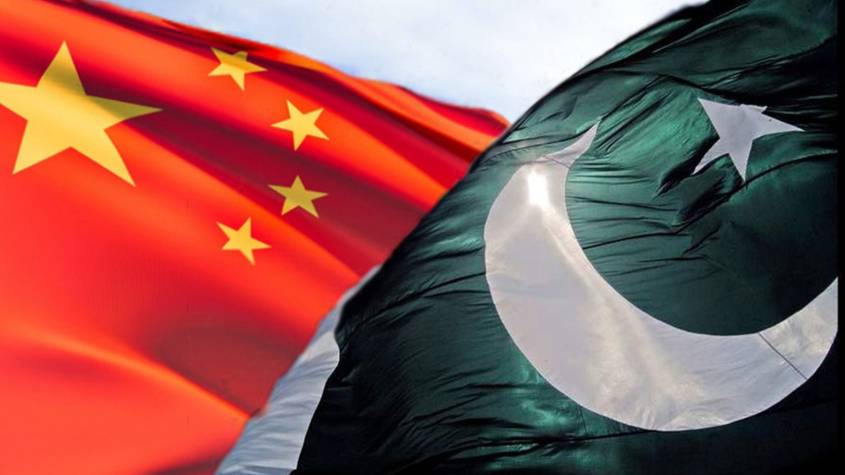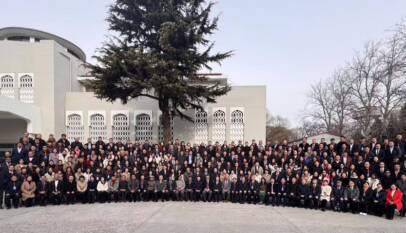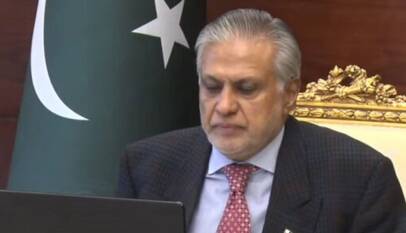Pakistan sees nearly 69% rise in exports to China in year 2021
According to the official data of the General Administration of Customs (GACC) of China, Pakistan’s exports to China increased by 68.9% in 2021 and crossed the historical figure of $3.58 billion while the total import and export between the two countries stood at $27.82 billion. Furthermore, Pakistan’s export to China crossed $365.35 million in December 2021, up 17 percent, while in the same period of the previous year, it was $312.33 million, which is the second-highest figure of the year.
BEIJING – Pakistan’s exports to China increased by 68.9% in 2021 and crossed the historical figure of $3.58 billion while the total import and export between the two countries stood at $27.82 billion, according to the official data from the General Administration of Customs (GACC) of China.
Pakistan’s export to China crossed $365.35 million in December 2021, up 17 percent, while in the same period of the previous year, it was $312.33 million, which is the second-highest figure of the year, China Economic Net (CEN) reported.
Pakistan’s exports made the highest gain in November 2021 when its export volume to China was $379.17 million. Last year, the highest value was in December 2020 when its export volume was $312.33 million. Overall, from January to December 2021, China’s imports from Pakistan totaled $3.58 billion irrespective of COVID-19, while in the same period of last year it was $2.12 billion. This year China’s export to Pakistan increased by 57.8% to $24.23 billion, while last year it was $15.36 billion and in 2019 it was $16.17 billion. Shan Saeed, Chief Economist at Juwai IQI, said trade between the two countries has made significant progress as both export and import volumes are on the rise. This is a testament of China’s commitment to BRI projects with CPEC under the limelight.
The trade and commerce volumes signify that China wants to provide unconditional support and import more from Pakistan in order to uplift the economy of Pakistan. Shan described that China will continue to support Pakistan for a very long time to come and Pakistan values Chinese unconditional support. It is worth mentioning that among the major products traded between the two countries, electronics, textiles, seafood, and agricultural products have been increased year-on-year, which has promoted Pakistan’s economic recovery.
Meanwhile, Pakistan’s Ambassador to China, Moin ul Haque has said that the CPEC Phase-II was much broader in scope and focused on industrial relocation, agricultural modernization, science and technology cooperation, job creation and people’s socioeconomic well-being.
“We are also making rapid progress on the development of the Gwadar Port and Free Trade Zone, which would promote regional connectivity and economic integration”, he said in an interview with Global Times. About current challenges and opportunities facing the CPEC in 2022, he said that it was a matter of great satisfaction that despite the challenges posed by COVID-19 pandemic in the last two years, the CPEC cooperation and work on all projects continued unhindered.
The recently held 10th meeting of the Joint Cooperation Committee reviewed wide-ranging cooperation under the CPEC framework and identified more areas of cooperation including establishment of a Joint Working Group on Information Technology and Industry, which is expected to support high quality development of the CPEC as envisioned by the leadership of the two countries, he said. In his comment on the current status of CPEC construction efforts and tackling the energy shortage, he said that the CPEC marks a new phase in Pakistan China relations by placing economic cooperation and connectivity at the center of bilateral agenda.
“Being the flagship project of the Belt and Road Initiative (BRI), it aims to enhance connectivity and trade linkages between Pakistan, China and the region through a network of roads, rail, fiber optic, energy pipelines, industrial clusters and Special Economic Zones,” he added.
Ambassador Haque said that in its first phase, the CPEC has helped us develop major infrastructure and address our essential energy needs. The energy projects which have already been completed include 1,320 megawatt (MW) capacity coal-fired power plants in Sahiwal (Punjab), Port Qasim (Karachi) and Hub (Balochistan); 660MW Engro Thar coal power project; 1,000 MW Quaid-i-Azam Solar Park in Bahawalpur (400MW project is complete while 600MW is under-implementation), and some smaller wind & solar energy projects.
A mega, 878-kilometer long, Matiari to Lahore ±660 KV HVDC Transmission Line project has also been completed with the capacity to evacuate 4,000MW electricity, he added. He said that it has also upgraded Pakistan’s national and international highway network to provide more reliable Pakistan China connectivity across the Karakoram Mountains and smoother inland communications. The CPEC investment and its spin-off effects have also generated thousands of jobs.
Regarding current level of third-party participation in the construction of the CPEC, he said that as the CPEC aims to promote regional integration and win-win cooperation, Pakistan and China have agreed to welcome and encourage high-quality investments and introduction of advanced technologies and expertise in the CPEC from third-party partners who are ready to work with us for common development.
“The two countries are jointly working to finalize a mechanism for third-party cooperation under the CPEC framework before formally processing such requests,” he added.
About Pakistan’s and CPEC’s role for regional cooperation, he said that Pakistan was one of the earliest supporters and participants of the Belt and Road Initiative (BRI).
“We emphatically endorse the spirit and philosophy of the BRI, which seeks to transcend national boundaries and lay bridges for a win-win cooperation and closer economic integration for a shared future,” he said.
Ambassador Haque remarked that the CPEC was not only benefiting Pakistan and China but with objectives of regional connectivity and trans-border trade, it was also having positive impact on regional countries like Iran, Afghanistan and Central Asian countries.
China and Pakistan have shown willingness to extend the CPEC to Afghanistan. Recently, trade consignments destined for Afghanistan were cleared from Gwadar Port, he added.
He said that under the leadership of Prime Minister Imran Khan, Pakistan has transformed its policy from geopolitics to geo-economics, and we endeavour to promote trade, transit, and energy flows as well as people-to-people exchanges in the region to create a well-connected, integrated region of shared destiny, harmony and development, adding, the CPEC would be playing a key role to achieve this vision.
Pakistan’s capital market delegation visits China, signs MoUs
Karachi – A high-level delegation from Pakistan’s capital market, led by Mr Akif S…













